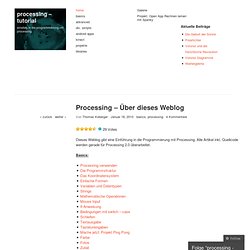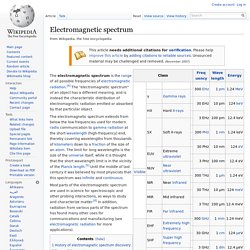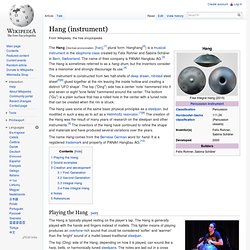

Processing – Über dieses Weblog « processing – tutorial. Dieses Weblog gibt eine Einführung in die Programmierung mit Processing.

Alle Artikel inkl. Quellcode werden gerade für Processing 2.0 überarbeitet. Basics: Aufgaben zu Basics Advanced: Div. Android Apps mit Processing erstellen: Kinect mit SimpleOpenNI: Projekte: Libraries Für Kommentare, Anregungen und Verbesserungsvorschläge bin ich jederzeit dankbar! Projektseite: Hier findest du neben dem Programm selbst auch noch viele Anwendungsbeispiele, die Programm – Referenz und einige gute Tutorials für den Einstieg in Processing. About these ads Gefällt mir: Gefällt mir Lade... Electromagnetic spectrum. The electromagnetic spectrum is the range of all possible frequencies of electromagnetic radiation.[4] The "electromagnetic spectrum" of an object has a different meaning, and is instead the characteristic distribution of electromagnetic radiation emitted or absorbed by that particular object.

Most parts of the electromagnetic spectrum are used in science for spectroscopic and other probing interactions, as ways to study and characterize matter.[6] In addition, radiation from various parts of the spectrum has found many other uses for communications and manufacturing (see electromagnetic radiation for more applications). History of electromagnetic spectrum discovery The first discovery of electromagnetic radiation other than visible light came in 1800, when William Herschel discovered infrared radiation.[7] He was studying the temperature of different colors by moving a thermometer through light split by a prism. He noticed that the highest temperature was beyond red. Where: Boundaries.
Technology acceptance model. The Technology Acceptance Model, version 1. (Davis 1989) The Technology Acceptance Model (TAM) is an information systems theory that models how users come to accept and use a technology. The model suggests that when users are presented with a new technology, a number of factors influence their decision about how and when they will use it, notably: Computer vision, algorithms, depth data. iOS. Ubiquitous. Sound feedback. Circles, history, Color Scheme Designer 3.
Www.bach-cantatas.com/Articles/Das_Wohltemperirte_Clavier_files/image004.gif. Introduction to Circos, Features and Uses // CIRCOS Circular Genome Data Visualization. Opensiuc.lib.siu.edu/cgi/viewcontent.cgi?article=1342&context=tpr. Hang (instrument) The Hang (German pronunciation: [haŋ],[1] plural form: Hanghang[2]) is a musical instrument in the idiophone class created by Felix Rohner and Sabina Schärer in Bern, Switzerland.

The name of their company is PANArt Hangbau AG.[3] The Hang is sometimes referred to as a hang drum, but the inventors consider this a misnomer and strongly discourage its use.[4] The instrument is constructed from two half-shells of deep drawn, nitrided steel sheet[5][6] glued together at the rim leaving the inside hollow and creating a distinct 'UFO shape'. The top ("Ding") side has a center 'note' hammered into it and seven or eight 'tone fields' hammered around the center. The bottom ("Gu") is a plain surface that has a rolled hole in the center with a tuned note that can be created when the rim is struck.
The name Hang comes from the Bernese German word for hand. The Hang is typically played resting on the player's lap. Five development stages of the PANArt Hang.